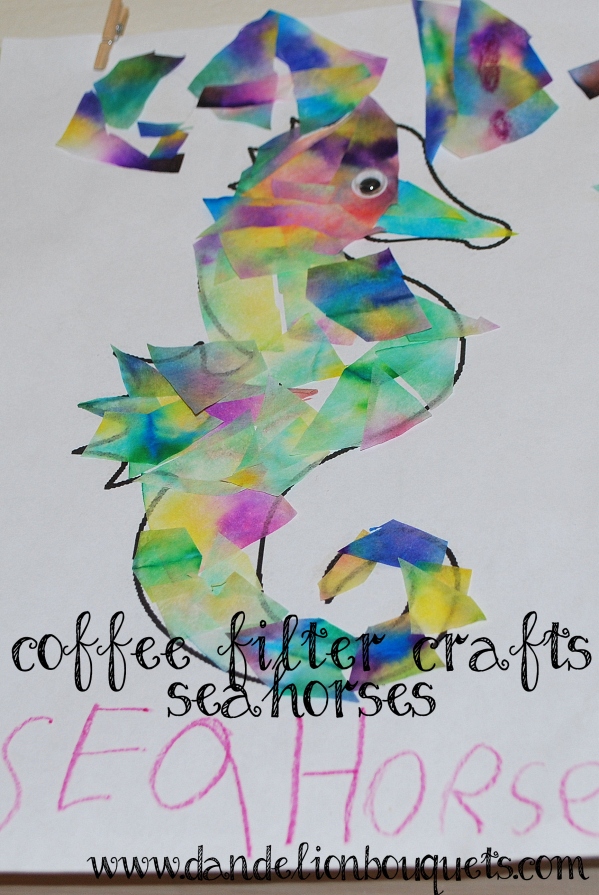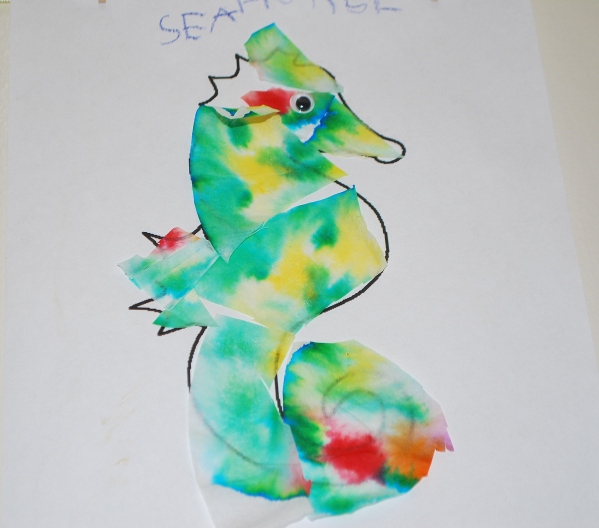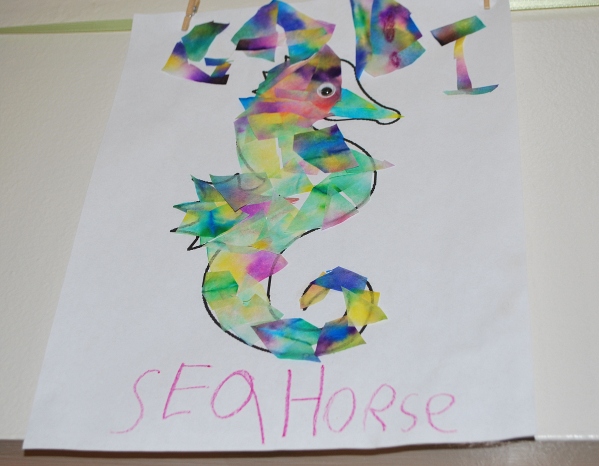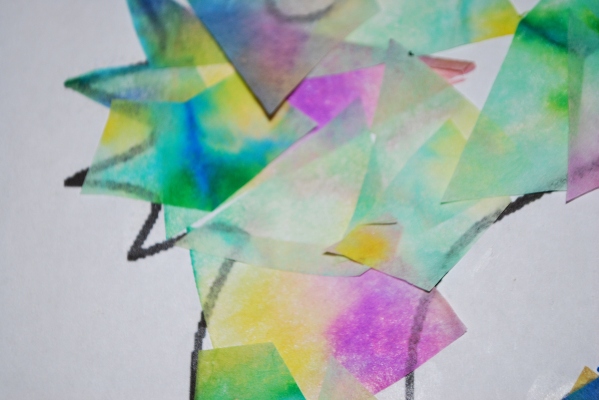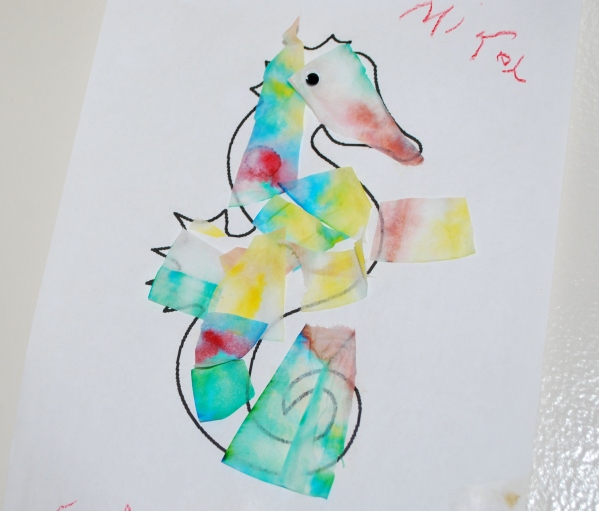This year in science, we have been studying ocean animals. We have checked out library books on sharks, watched videos about octopuses, studied the starfish, and really have enjoyed investigating in depth the many creatures of our oceans. The kids are making ocean animal notebooks to go along with our study, but I have also tried to incorporate arts and crafts into our unit study as often as I can. Doing something creative with your hands helps solidify learning and makes it more fun, especially for the hands-on learners.
A while ago we examined the lives and characteristics of seahorses. We borrowed some books from the library (Seahorses and Sea Dragons by Mary Jo Rhodes and Seahorses:Everything About History, Care, Nutrition, Handling, and Behavior by Frank Indiviglio) and learned amazing things about these fascinating creatures. We found that YouTube has some great educational videos on seahorses as well:
So what did we learn? Here are ten facts about these little equine-looking sea creatures.
1. Seahorses have the ability to change color and sometimes even their texture to blend into their surroundings, such as seaweed, various types of coral, and sea anemones.
2. Seahorses are monogamous, mostly because they cannot swim very well, making it difficult enough to find one partner in life.
3. Seahorses greet their partners every day with an elaborate dance and an intertwining of their tails before they venture off to find food.
4. Seahorses have prehensile tails just like monkeys do, which means they can use them to grab onto coral or another seahorse.
5. Seahorses have few enemies because they are too bony and too hard to eat, but often crabs are willing to try.
6. Seahorses eat plankton, tiny fish, and small crustaceans by sucking them through their snouts like a vacuum cleaner. They have to eat constantly or they will die.
7. Seahorses are the only animal species in which the male is the one that gives birth to their young.
8. Seahorse swim upright.
9. Seahorses are actually fish, as they breathe with gills, have some fins, and use a swim bladder to float.
10. Seahorses can measure anywhere from less than an inch to more than fourteen inches long.
And now that we know a little about seahorses, let’s gather a few supplies to make a coffee filter seahorse.
You will need: a coffee filter, washable markers in bright colors, a paintbrush, water, a paper plate, a googly eye, scissors, a glue stick, and a seahorse template such as this one
First, flatten the coffee filter on top of the paper plate. Have your child draw all over the coffee filter with the washable markers. Big circles of color work the best.
Next, give your child some water and a paint brush and let them thoroughly paint over the coffee filter. It’s okay if they use too much water as it will dry. (eventually!)Lay the coffee filter and plate in a warm place to dry. (I put ours on top of our dryer!)
Once the filter is dry, show your child how to cut it up into small triangles and squares. Then, instruct them to glue them to their seahorse page, overlapping them like the bony fins of a seahorse and covering the entire animal’s body. More overlap will produce a prettier effect.
Finally, glue on a googly eye and hang the completed art in a conspicuous spot for all to admire.
I think the results of this craft are very Eric Carle-like. In fact, he has written a cute book called Mister Seahorse that features bright watercolor seahorses in the illustrations. That might be a fun read-aloud while the kids are doing this craft.

